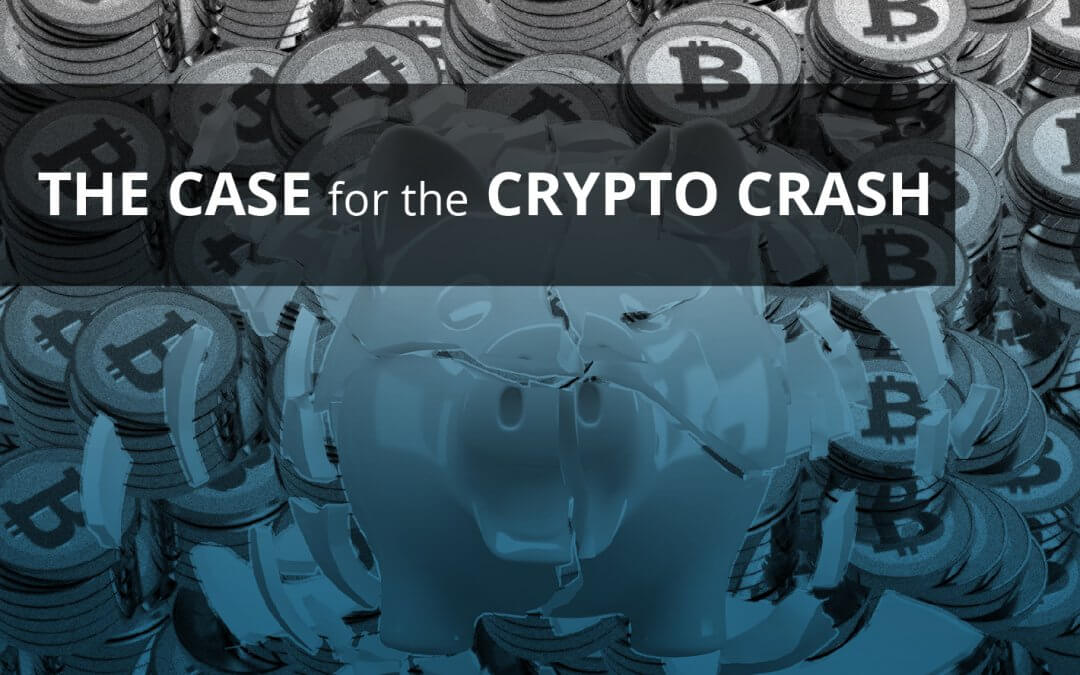The Case for the Crypto Crash
Anyone who knows me knows that I am a big supporter of, and believer in distributed ledger technology, or DLT.
It has the potential to revolutionize the way we build certain types of solutions, and the way certain systems, software, and institutions, even people, interact.
That being said, I also believe a strong argument can be made that crypto currencies, at least in their current incarnation, are destined to fail.
Full disclosure: I own no crypto currencies.
There is a foundational flaw in the use case of cryptocurrency. It is NOT easily transacted; often having lengthy or ungainly settlement times, requiring in almost all cases, conversion to fiat currency, and it’s generally ill suited to the very task it was designed to perform: storing value for transacting business.
It’s hard for people to use crypto currencies.
I have heard first hand, countless stories of transactions intended to be conducted using crypto currencies, where the parties wouldn’t agree to them without one or the other agreeing to guarantee value to some fiat currency.
If this continues and people aren’t able to use cryptocurrency as a currency, what then? Normal market rules would dictate a crash to zero.
But is this a market that follows normal market rules? What exactly is normal?
Fiat Currency, or Fiat Money:
Let’s back up and look at fiat currency. Take the US dollar.
Early on, the United States dollar was tied to the gold standard. The United States Bullion Depository, more commonly known as Fort Knox, was established as a store in the US for gold that backed the dollar.
In 1933, the US effectively abandoned this standard, and in 1971, all ties to gold were severed.
So what happened? Effectively nothing. Yet the US backs the dollar.
Why? The US dollar is intimately tied to our financial system by the Federal Reserve, which, as demonstrated for better or worse in the financial crisis of 10 years ago, will do everything in its power to shore up the currency when needed.
So we operate today with the shared belief, some might call it a shared delusion, that there is value in the money we carry in our wallets and in the bank statements we see online.
Is cryptocurrency approaching this level of shared belief?
Who will step in if crypto crashes? In short, no one. There is no governing body, by design, behind any cryptocurrency.
As I write this, all crypto currencies are down over 10%, some are down over 20%. Nothing will prop it back up other than buyers: speculators hoping to buy on the downswing, hoping to hold until it rises again.
So, is this a normal market? I say no, it is not. I see no ultimate destination on this journey, other than disappointment.
If you have risk capital to play with, go ahead, risk some on crypto if you wish.
Personally, I would rather invest my money in companies I can understand, with business models that make sense. That being said, in my case, this also means investing in my company’s work to build solutions on the technology underlying crypto currency, or distributed ledger technology.
You may be asking yourself, how can he support distributed ledger technology and not have faith in cryptocurrency?
The answer here is simple. The technology is solid, the use case of crypto is flawed. Java is solid, but not all java applications are good applications. Crytpo currency is just another application running on distributed ledger, and as I have posited herein, a bad one.
Chuck Fried is the President and CEO of TxMQ, a systems integrator and software development company focused on building technical solutions for their customers across the US and Canada.
Follow him at www.chuckfried.com, or @chuckfried on Twitter, or here on the TxMQ blog.



